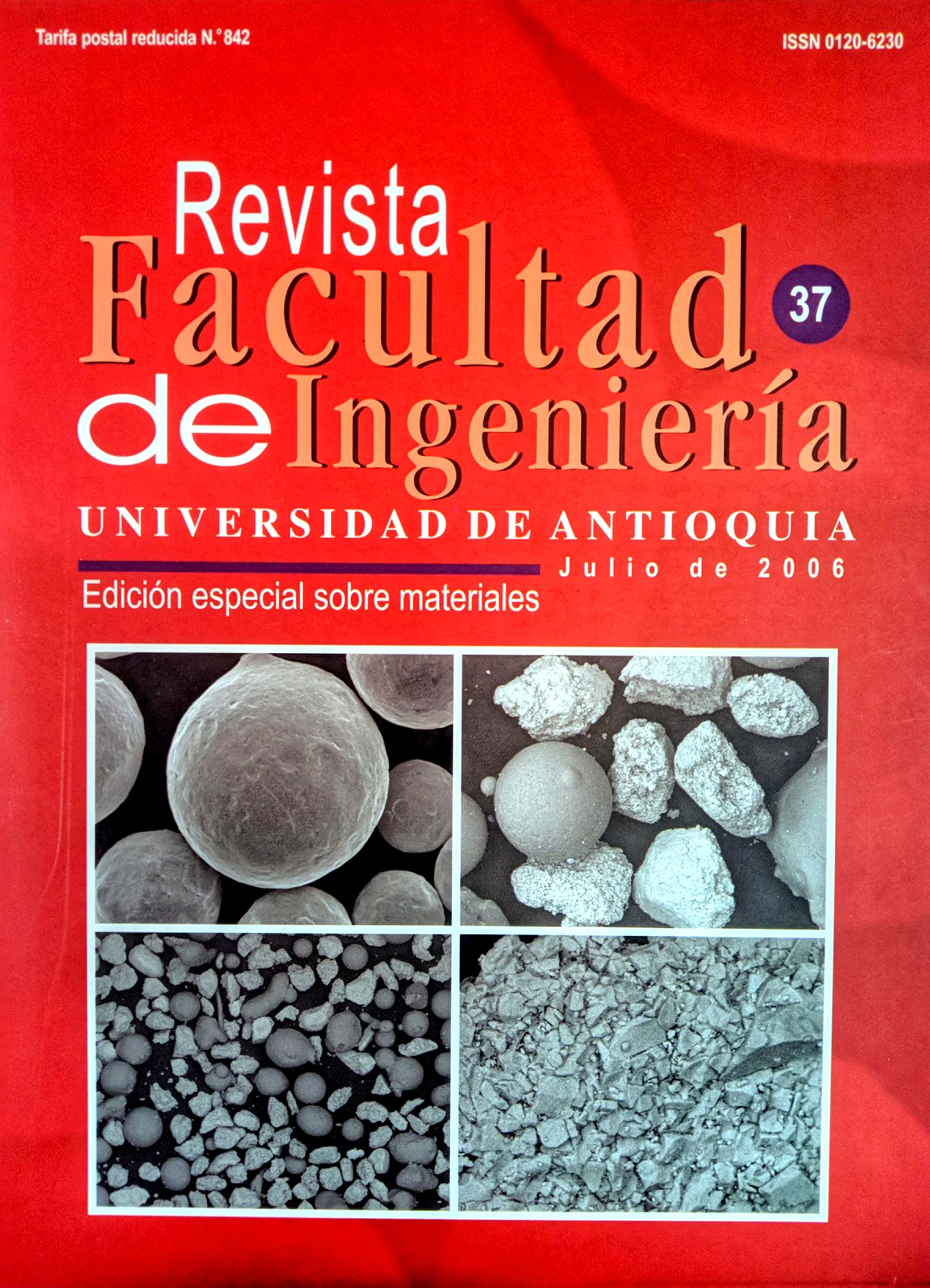Study of blends from recycled polymer for properties improvement
DOI:
https://doi.org/10.17533/udea.redin.343417Keywords:
PP, PET, maleic anhydride (AM), grafting, polymer blendsAbstract
Polypropylene (PP) presents low impact resistance at low temperatures and easily undergoes thermal degradation. On the other hand, polyethylene terephtalate (PET) is very hygroscopic. One way to overcome these weaknesses is to blend both polymers trying to reach a good interaction through the insertion of polar functional groups within the PP backbone chain. In this study, recycled PP was grafted with maleic anhydride (AM), and the insertion was quantified by measuring carbonyl index with a Fourier Transform Infrared Spectrophotometer (FTIR). Rheometer blends were prepared using recycled PP (grafted and ungrafted) with recycled PET and their compatibility was analyzed using scanning electron microscopy (SEM) and differential scanning calorimeter (DSC). Other properties such as hardness and water absorption were also measured. It was concluded that grafting recycled PP made it more compatible with recycled PET.
Downloads
References
J. M. G. Martínez, J. Taranco, O. Laguna, E. P. Collar. “Modification of Polypropylene by Maleic Anhydride.” Polymer Engineering and Science. Vol.11. 1992. pp. 335-
M. Y. Pedram, H. R. Vega, B. Quijada. “Melt Funcionalization of polypropylene UIT Methyl Esters of Itaconic Acid”. Polymer. Vol. 42. 2001. pp. 4751-4758. DOI: https://doi.org/10.1016/S0032-3861(00)00816-8
G. S. Paulo, A. Campos, C. A. Márcia.“Grafting of Tetrahydrophthalic and Maleic Anhydride Onto polyolefins in solution”. Chem Soc. Vol. 15. 2004. pp. 532-540. DOI: https://doi.org/10.1590/S0103-50532004000400015
S. Malaika, W. Kong. “Reactive processing of Polymers: Effect of In Situ Compatibilization on characteristics of blends of Polyethylene Terephtalate and Ethylene-Polypropylene Rubber”. Polymer. Vol. 46. 2005. pp. 209-228. DOI: https://doi.org/10.1016/j.polymer.2004.08.050
Y. Li, X. Xiea, B. Guo. “Study on styrene-assisted melt free radical grafting of maleic anhydride onto polypropylene”. Polymer. Vol. 42. 2001. pp. 3419-3425. DOI: https://doi.org/10.1016/S0032-3861(00)00767-9
M. Saule, S. Navarre, O. Babot. “Chemical Modification of Molten Polypropylene by Thermolysis of Peroxidic Compounds”. Macromolecule. Vol. 36. 2003. pp. 7469-7476. DOI: https://doi.org/10.1021/ma0342325
P. Santos, S. Pezzin. “Mechanical Properties of Polypropylene reinforced with recycled PET fibers”. Journal of Materials Processing Technology. Vols. 143-144. 2003. pp. 517-520. DOI: https://doi.org/10.1016/S0924-0136(03)00391-1
D. Shi, J. Yang, Z. Yao. “Functionalization of isotactic polypropylene with maleic anhydride by reactive extrusion: mechanism of melt grafting”. Polymer. Vol. 42. 2001. pp. 5549-5557. DOI: https://doi.org/10.1016/S0032-3861(01)00069-6
Downloads
Published
How to Cite
Issue
Section
License
Revista Facultad de Ingeniería, Universidad de Antioquia is licensed under the Creative Commons Attribution BY-NC-SA 4.0 license. https://creativecommons.org/licenses/by-nc-sa/4.0/deed.en
You are free to:
Share — copy and redistribute the material in any medium or format
Adapt — remix, transform, and build upon the material
Under the following terms:
Attribution — You must give appropriate credit, provide a link to the license, and indicate if changes were made. You may do so in any reasonable manner, but not in any way that suggests the licensor endorses you or your use.
NonCommercial — You may not use the material for commercial purposes.
ShareAlike — If you remix, transform, or build upon the material, you must distribute your contributions under the same license as the original.
The material published in the journal can be distributed, copied and exhibited by third parties if the respective credits are given to the journal. No commercial benefit can be obtained and derivative works must be under the same license terms as the original work.










 Twitter
Twitter